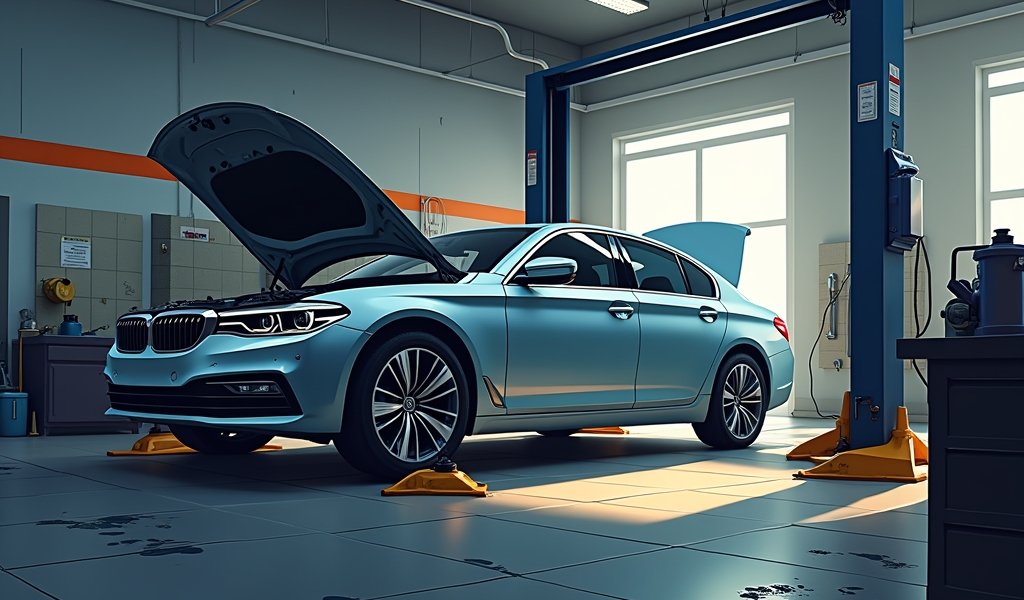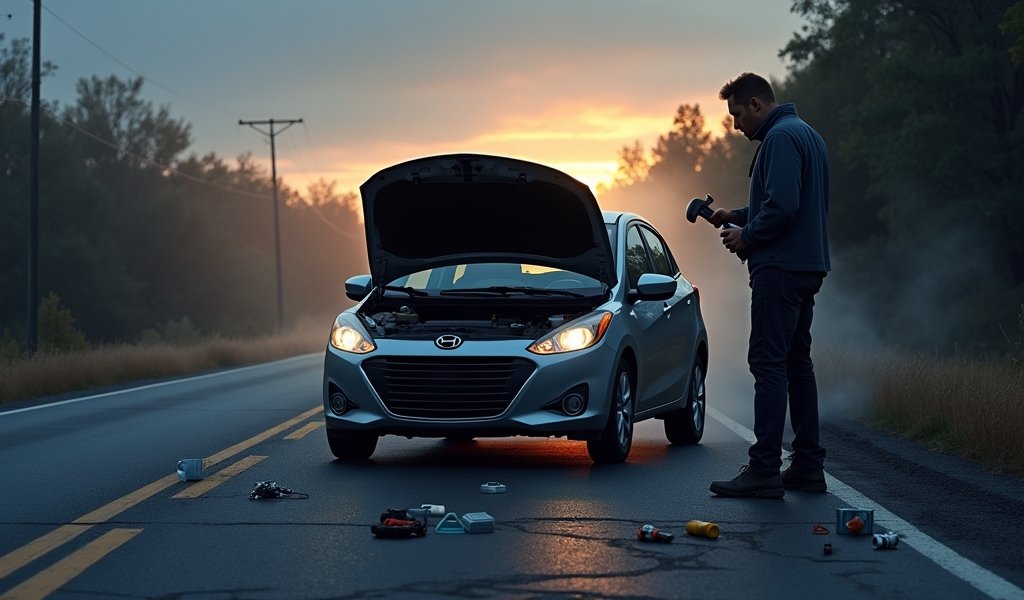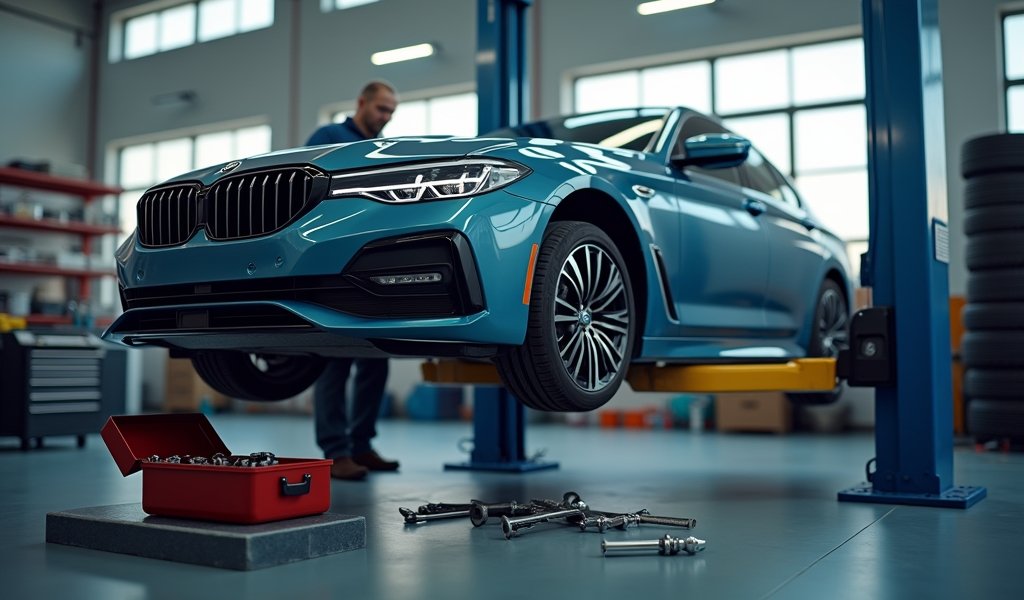Overview
This article outlines seven critical areas of car maintenance that prevent expensive repairs, including monitoring warning lights, maintaining fluids, proper tire care, battery upkeep, timely brake service, avoiding DIY repair pitfalls, and following manufacturer maintenance schedules. The author, a mechanic with over 20 years of experience, emphasizes that most costly vehicle repairs begin as small, inexpensive problems that were ignored, and that consistent preventive maintenance is the key to extending vehicle life beyond 250,000 miles.
Table of Contents
- Understanding Warning Lights: Your Car’s Communication System
- Fluid Maintenance: The Lifeblood of Your Vehicle
- Tire Care: Where Performance Meets Safety
- Battery Maintenance: Preventing Unexpected Failures
- Brake Service: Safety You Shouldn’t Skimp On
- DIY Repairs: Avoiding Common Pitfalls
- Following Your Maintenance Schedule: The Ultimate Prevention
- Conclusion: Small Steps for Long-Term Reliability
- Frequently Asked Questions
As a mechanic who’s spent over two decades under the hood, I’ve seen how small maintenance oversights can lead to big repair bills. Your vehicle is an intricate symphony of parts working together, and like any fine instrument, it requires regular care to perform at its best. Many of the most expensive repairs I encounter daily could have been prevented with simple attention to warning signs and basic maintenance.
Let’s face it – most of us don’t think about our cars until something goes wrong. By then, what could have been a quick fix has often evolved into a complex repair. The good news? Avoiding common car service mistakes is easier than you might think, and the payoff is substantial – both for your wallet and your peace of mind.
Understanding Warning Lights: Your Car’s Communication System
Those glowing symbols on your dashboard aren’t just pretty lights – they’re your vehicle’s primary communication system. Yet I’ve lost count of how many customers sheepishly admit they drove for weeks or even months with warning lights illuminated.
The check engine light alone can indicate hundreds of different issues, from a loose gas cap (a 30-second fix) to serious engine problems requiring immediate attention. Other critical indicators include the oil pressure light, battery warning, and ABS notifications – all designed to catch problems before they escalate.
When a warning light appears, don’t panic, but don’t ignore it either. Here’s what to do:
- Consult your owner’s manual to understand what the specific light means
- For check engine lights, visit an auto parts store for a free diagnostic scan
- Address yellow/amber warnings within a week
- Take red warnings seriously – they typically require immediate attention
Remember, your dashboard is like your car’s version of a medical alert system. According to Consumer Reports, responding promptly to warning lights can prevent an average of $800 in unnecessary repair costs per incident.
Fluid Maintenance: The Lifeblood of Your Vehicle

If there’s one area where I see drivers consistently cutting corners, it’s fluid maintenance. Your vehicle depends on multiple specialized fluids to function properly, each with its own lifespan and purpose.
Engine oil is the most familiar, but coolant, transmission fluid, brake fluid, power steering fluid, and even windshield washer fluid all play crucial roles. Neglecting these fluids is like an athlete refusing to drink water – performance suffers quickly, and catastrophic failure often follows.
The most expensive repairs I perform often trace back to fluid neglect. A $50 oil change ignored too long can lead to a $4,000 engine replacement. Low coolant might result in overheating and a blown head gasket – another $1,500+ repair.
Implement this simple monthly fluid check routine:
- Engine oil: Check level and color when the engine is cool
- Coolant: Verify levels in the overflow reservoir (never when hot!)
- Transmission fluid: Check with the engine running (on most vehicles)
- Brake fluid: Ensure levels are between MIN and MAX marks
- Power steering: Maintain proper levels to prevent pump damage
Follow these general change intervals, but always defer to your specific vehicle maintenance schedule:
- Engine oil: Every 3,000-10,000 miles (varies by vehicle and oil type)
- Coolant: Every 30,000 miles or 2-5 years
- Transmission fluid: Every 30,000-100,000 miles
- Brake fluid: Every 2-3 years (absorbs moisture over time)
- Power steering fluid: Every 50,000 miles or when dirty
Your owner’s manual contains specific recommendations for your vehicle – consider it your maintenance bible and follow it religiously.
Tire Care: Where Performance Meets Safety
I can’t tell you how many otherwise well-maintained vehicles I see roll into my shop with dangerously neglected tires. Your tires are literally where the rubber meets the road – they affect everything from fuel economy to handling to safety.
Improper inflation is the most common tire issue I encounter. Underinflated tires increase rolling resistance (reducing fuel economy) and cause excessive heat buildup that can lead to blowouts. Overinflated tires reduce traction and wear prematurely in the center.
Then there’s rotation neglect. Front tires typically wear differently than rear tires, and without regular rotation, you’ll be replacing tires much sooner than necessary – a costly oversight.
Implement these simple tire maintenance habits:
- Check pressure monthly when tires are cold
- Follow the pressure recommendations on your driver’s door jamb (not the tire sidewall)
- Inspect tread depth regularly using the penny test (insert Lincoln’s head upside down – if you can see all of his head, you need new tires)
- Rotate tires every 5,000-7,000 miles
- Check alignment if you notice uneven wear patterns or pulling
According to the National Highway Traffic Safety Administration, proper tire maintenance not only extends tire life by up to 50% but also improves fuel efficiency by up to 3% – savings that add up quickly.
Battery Maintenance: Preventing Unexpected Failures
Your battery seems fine until suddenly, it’s not. That’s why battery issues rank among the top reasons for roadside assistance calls. Most drivers don’t realize their battery is struggling until that dreaded click-instead-of-start moment.
Batteries typically last 3-5 years, but factors like extreme temperatures, short trips, and electronic accessories can significantly reduce lifespan. Many batteries die without warning, but subtle signs often precede failure: slower engine cranking, dimming headlights, or electronic quirks.
The terminals where your battery connects to your electrical system are particularly vulnerable. Corrosion (that white or blue-green powder) creates resistance that makes starting harder and can even prevent charging.
Prevent battery surprises with these simple steps:
- Visually inspect terminals monthly for corrosion
- Clean terminals with a mixture of baking soda and water
- Have your charging system tested annually or if you notice starting issues
- Consider proactive replacement after 4 years, especially before winter
- Limit accessory use when the engine is off
For batteries approaching the 3-year mark, consider a professional load test during your next service – it’s usually free and can predict failure before you’re stranded somewhere inconvenient.
Brake Service: Safety You Shouldn’t Skimp On

When it comes to brakes, that high-pitched squeal isn’t your car’s attempt at singing – it’s a deliberate warning system. Brake pads are designed with wear indicators that create this noise when they’re approaching minimum safe thickness.
I’ve seen too many customers ignore these warnings until they hear grinding – by then, what would have been a simple pad replacement has escalated to costly rotor damage or even caliper repairs. The difference can be hundreds or even thousands of dollars.
Brakes typically need attention every 30,000-70,000 miles, but driving habits significantly impact this interval. City driving with frequent stops wears brakes faster than highway cruising.
Watch for these brake warning signs:
- Squealing or grinding noises
- Pulsation in the brake pedal
- Longer stopping distances
- Vehicle pulling to one side when braking
- Brake pedal feeling soft or spongy
When you notice any of these symptoms, don’t procrastinate. Brake issues never improve with time – they only escalate in both safety risk and repair cost. For basic maintenance, have your brake fluid flushed every 2-3 years, as it absorbs moisture over time and becomes less effective.
Remember that proper brake maintenance isn’t just about saving money – it’s about protecting yourself and others on the road.
DIY Repairs: Avoiding Common Pitfalls
As a professional mechanic, I have mixed feelings about DIY car repairs. On one hand, I admire the initiative – on the other, I’ve seen many well-intentioned efforts create bigger problems than they solved.
The rise of online tutorials has created a generation of weekend warriors armed with a smartphone in one hand and a wrench in the other. While some maintenance tasks are perfectly suited for DIY (oil changes, air filter replacements, wiper blades), others require specialized tools and knowledge.
Common DIY pitfalls include:
- Using incorrect parts or fluids
- Overtightening fasteners (stripped threads are a nightmare)
- Disconnecting sensors without proper reconnection
- The classic “leftover parts” scenario after reassembly
- Misdiagnosing the underlying problem
If you enjoy working on your car, start with these beginner-friendly maintenance tasks:
- Oil and filter changes
- Air filter replacement
- Wiper blade installation
- Battery terminal cleaning
- Light bulb replacements
For more complex jobs, invest in a model-specific repair manual rather than relying solely on general YouTube videos. Photograph components during disassembly to ensure proper reassembly. Most importantly, know when to call for professional help – electrical issues, timing components, and transmission work typically require specialized expertise.
Following Your Maintenance Schedule: The Ultimate Prevention
Think of your vehicle’s maintenance schedule as a prescription for automotive health. Manufacturers develop these schedules based on extensive testing and engineering data – they know exactly what your vehicle needs and when it needs it.
Yet many drivers view scheduled maintenance as an optional suggestion rather than a requirement. They stretch oil changes beyond recommended intervals, postpone inspections, and skip important service milestones.
This approach might save money in the short term, but it’s a false economy. Every vehicle has critical maintenance points – timing belt replacement, transmission service, cooling system flush – that prevent catastrophic failures when performed on schedule.
Your maintenance schedule typically follows either time or mileage intervals:
- Every 3 months/3,000 miles: Basic inspection and oil change (conventional oil)
- Every 6 months/6,000 miles: Oil change (synthetic), tire rotation, basic inspection
- Every 12 months/12,000 miles: More comprehensive inspection including brakes, suspension
- Every 2-3 years: Brake fluid flush, coolant service
- Every 60,000-100,000 miles: Major service (timing belt/chain, transmission)
Locate your vehicle’s maintenance schedule in your owner’s manual or online through the manufacturer’s website. Create calendar reminders for time-based service, and note mileage milestones on your phone.
Remember that following the maintenance schedule isn’t just about preventing breakdowns – it’s also about maintaining resale value. A vehicle with complete service records can command significantly higher prices when it’s time to sell or trade-in.
Conclusion: Small Steps for Long-Term Reliability
After decades in the garage, one truth stands clearer than ever: most expensive car repairs begin as small, inexpensive problems that were ignored. The difference between a vehicle that lasts 100,000 miles and one that surpasses 250,000 miles isn’t luck – it’s consistent, proactive maintenance.
By avoiding these common car service mistakes, you’re not just saving money – you’re investing in reliability, safety, and peace of mind. Your vehicle works hard for you every day; a little attention goes a long way toward ensuring it continues to do so for years to come.
Remember that prevention is always less expensive than repair. Establish a relationship with a trusted mechanic for services beyond your DIY comfort zone, and don’t be afraid to ask questions – good mechanics are educators as much as technicians.
With these quick fixes and maintenance habits in your automotive toolkit, you’ll be well-equipped to avoid the most common and costly car service mistakes. Your vehicle (and your wallet) will thank you for the attention.
Frequently Asked Questions
How often should I really change my oil?
Modern vehicles with synthetic oil can go 7,000-10,000 miles between changes, but check your owner’s manual for specifics. Severe conditions like frequent short trips or extreme temperatures may require more frequent changes.
Is it worth paying extra for premium fuel?
Only use premium fuel if your vehicle specifically requires it – check your fuel door or owner’s manual. Using higher octane fuel in an engine designed for regular provides no benefit and wastes money.
How can I tell if my mechanic is overcharging me?
Get written estimates before authorizing work and don’t hesitate to get second opinions for major repairs. Reputable shops should explain exactly what needs fixing and why, using clear language without unnecessary upsells.
What’s the most commonly overlooked maintenance item?
Transmission service is frequently neglected yet critical for long-term reliability. Many transmissions fail prematurely due to fluid that’s never been changed throughout the vehicle’s life.
How do I know when it’s time to replace my car rather than repair it?
Consider replacement when repair costs exceed 50% of your vehicle’s current value within a 12-month period. Also factor in reliability patterns, safety concerns, and whether major components like engine or transmission are failing.


Pingback: Fuel Pump Relay Location: Top 5 Fixes - knowsyourcar.com
Pingback: Control Arm Bushing Replacement Pro Tips - knowsyourcar.com
Pingback: CV Joint Boot Replacement Kit 5 Pro Tips - knowsyourcar.com
Pingback: power steering fluid type compatibility! - knowsyourcar.com
Pingback: Hydraulic Brake Line Flaring Tool 5 Tips - knowsyourcar.com